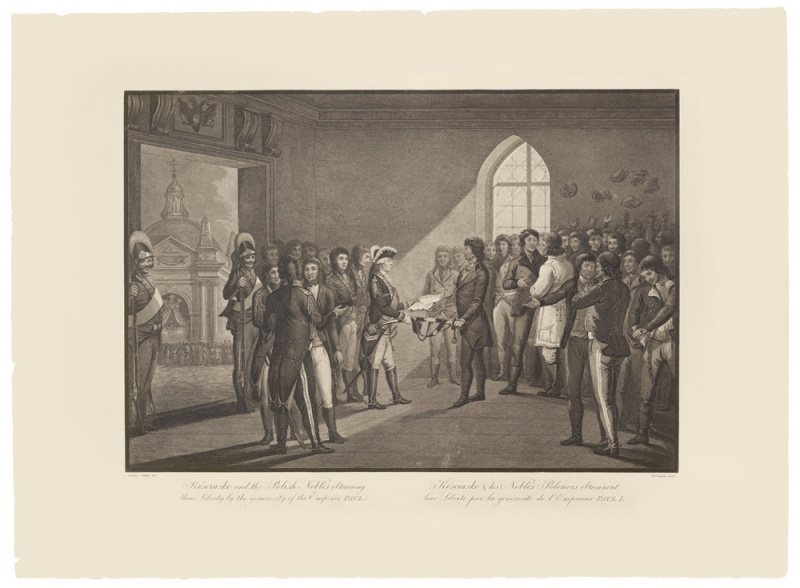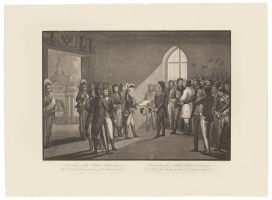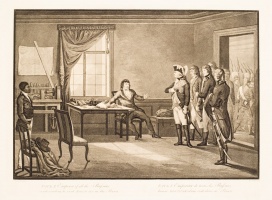

Paul I releases Tadeusz Kościuszko from prison
| Author: |
Thomas Gaugain (1756–1812) |
| Created: | 1801 |
| Material: | paper |
| Technique: | copper engraving |
| Dimensions: | 56 × 76 cm |
| Signature: | bottom left: Alexander Orłowski del bottom right: Tho.Gaugain sculp |
Copper engraving after Alexander Orłowski.
The second engraving by Thomas Gaugain (1756–1812) based on a watercolour by Alexander Orłowski (1777–1832) shows the release from prison of Tadeusz Kościuszko and other rebels. This event demonstrates the radically changed policy in the aftermath of the death of Catherine II in the treatment of participants in the 1794 uprising. Paul I granted Kościuszko his freedom, and let him leave the country on condition that he promised never to bear arms against Russia. Twelve thousand other prisoners were released, who had to take an oath of allegiance to the Russian Empire. Among them were Ignacy Potocki, Karol Kniaziewicz and Julian Ursyn Niemcewicz. In contrast to the first scene showing the emperor’s visit to Kościuszko, the second engraving is less a documentary version of an event and more symbolic. In fact, Kościuszko and the other prisoners were not released at the same time, so the moment of the leader’s liberation could hardly have caused such a commotion, with brothers-in-arms hugging each other in great joy, and caps flying in the air. The light streaming in through the window casts the figure of Paul I into relief, as he hands Kościuszko a letter of pardon and returns him his sword. This leads us to conclude that these engravings were commissioned with the aim of praising the ‘enlightened Russian emperor’. Both the original watercolours by Alexander Orłowski are held in the State Historical Museum in Moscow.
Text author Rūta Janonienė
Source: Law firm Valiunas Ellex art album RES PUBLICA (2018). Compiler and author Rūta JanonienėExpositions: "The Age of Romanticism", 11 September 2019 – 6 August 2020, Lithuanian Art Centre TARTLE (Užupio St. 40, Vilnius). Curator Rūta Janonienė.








